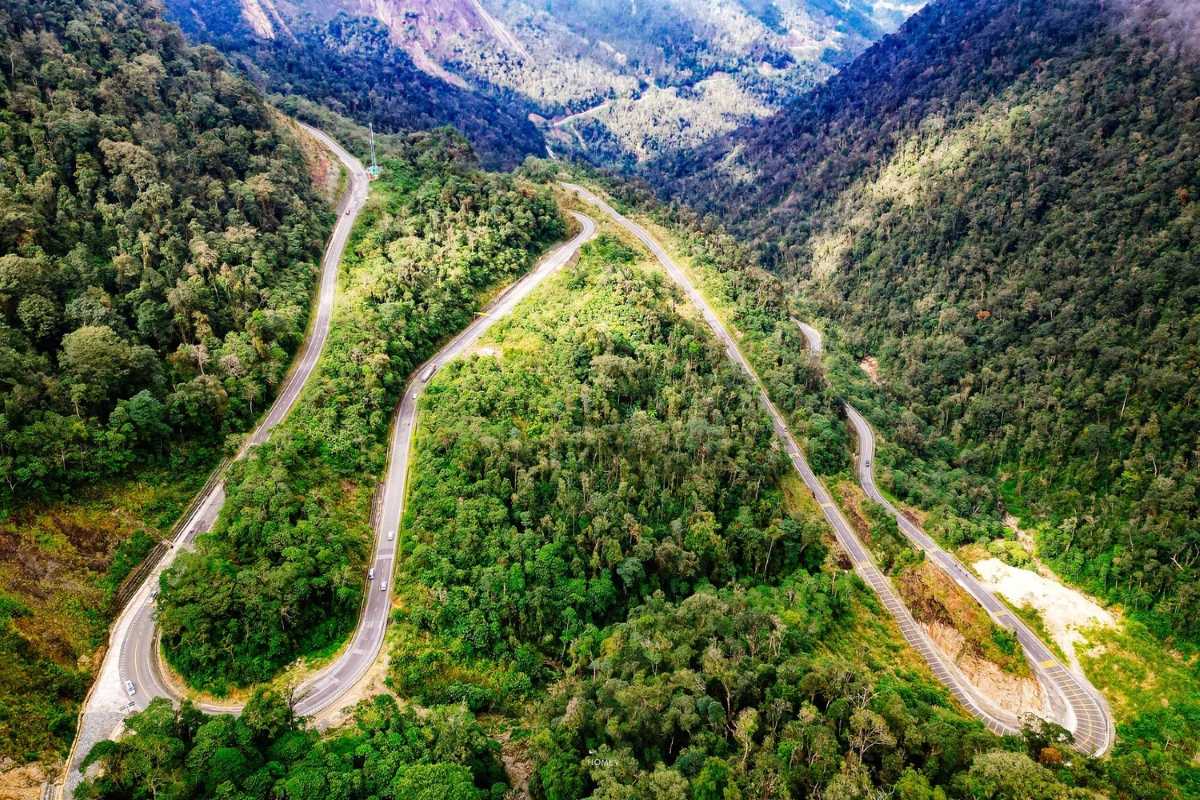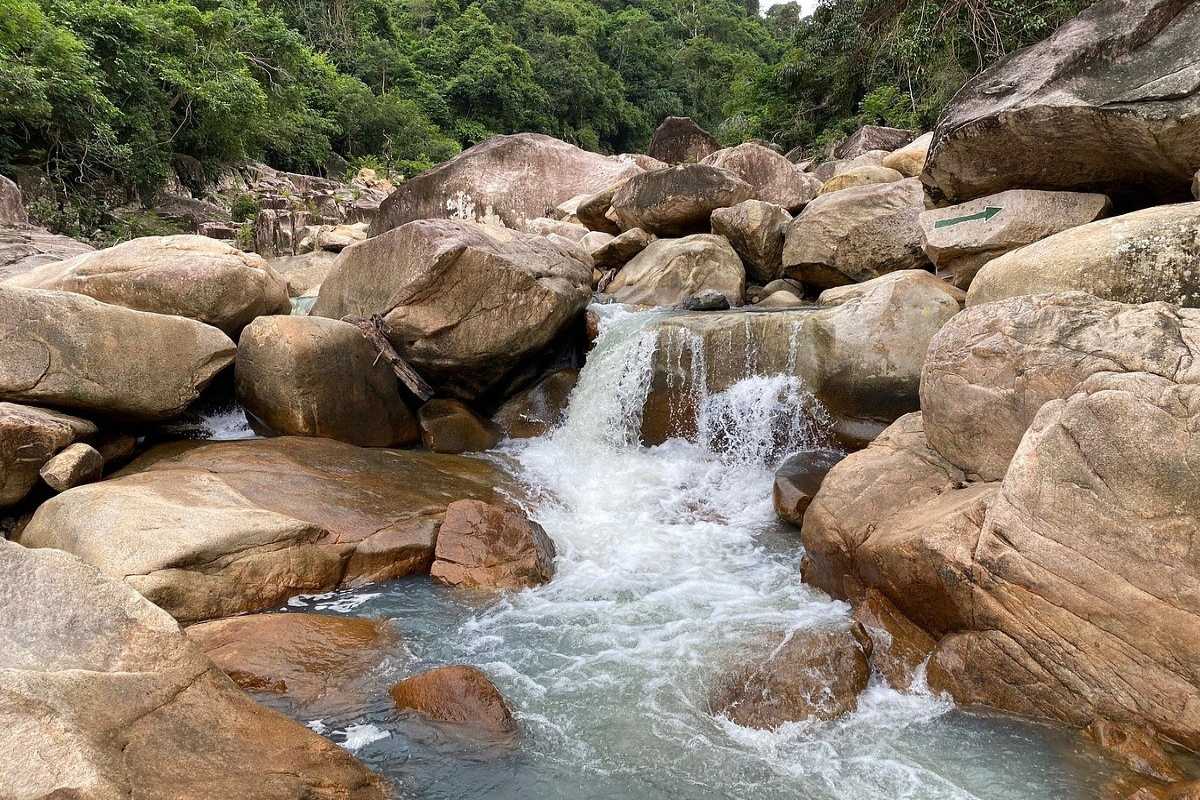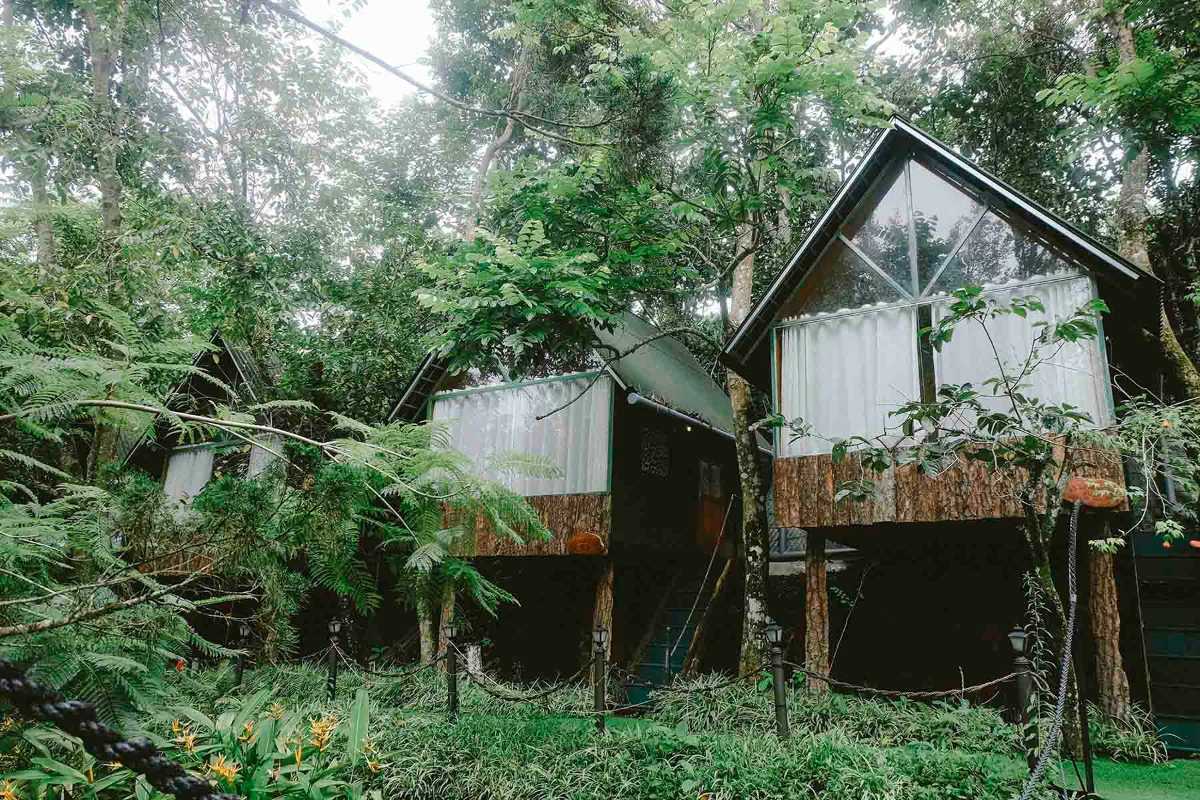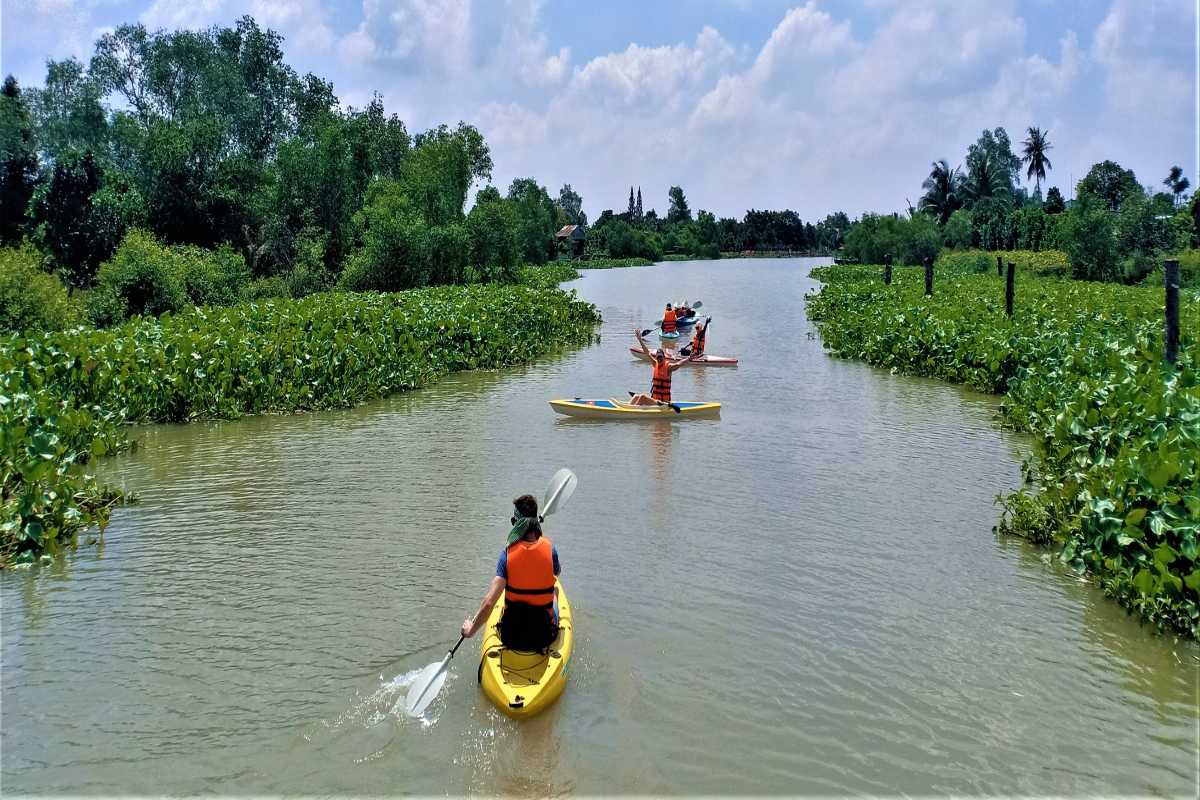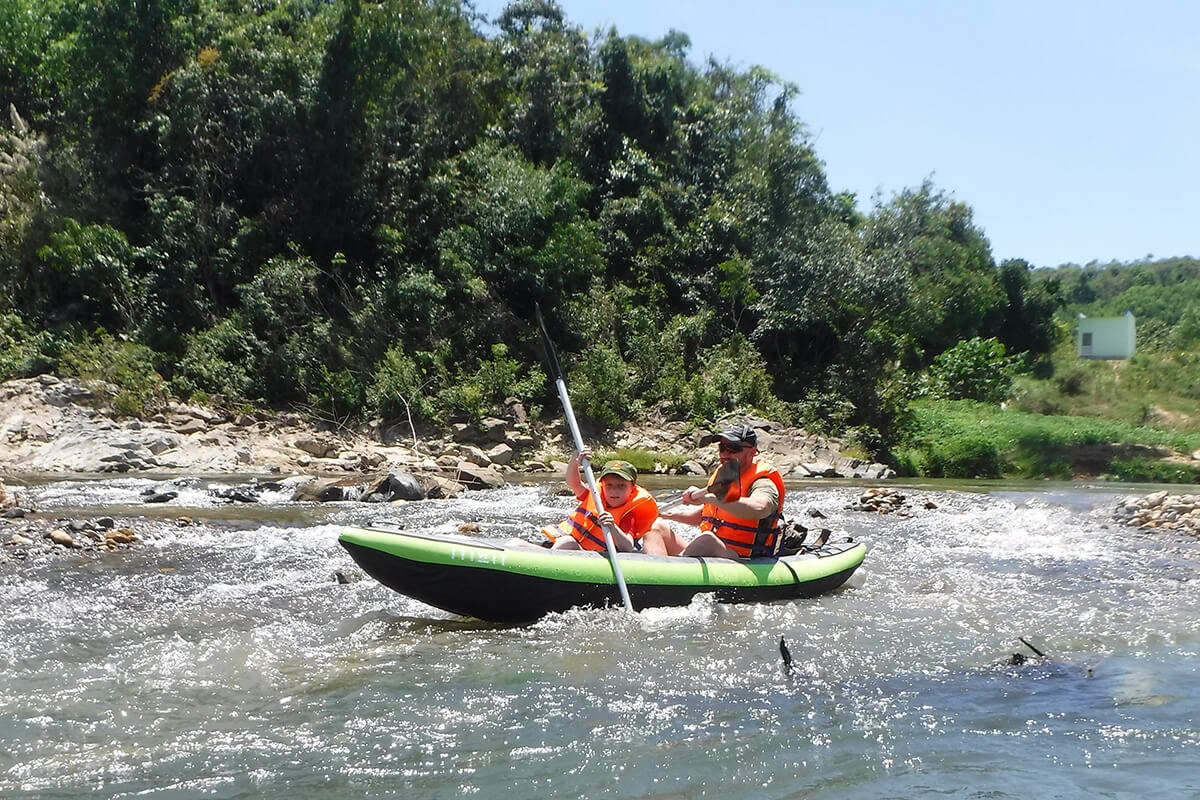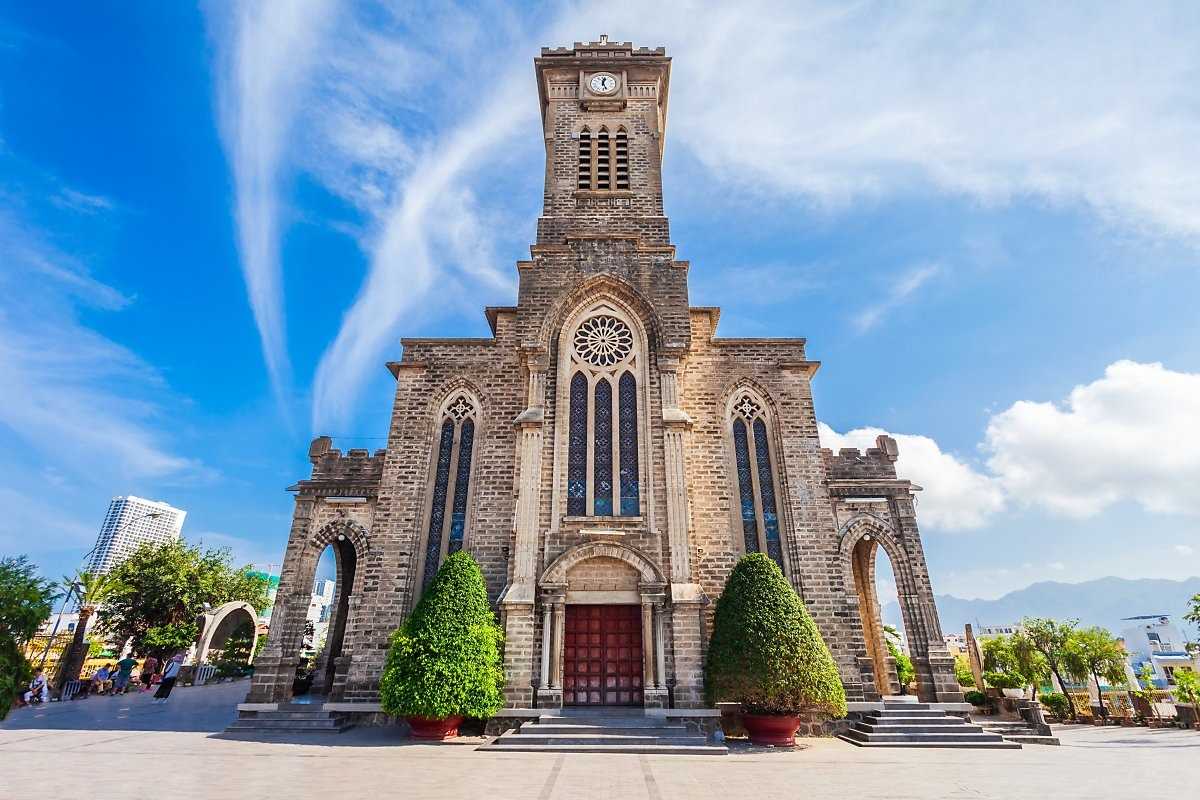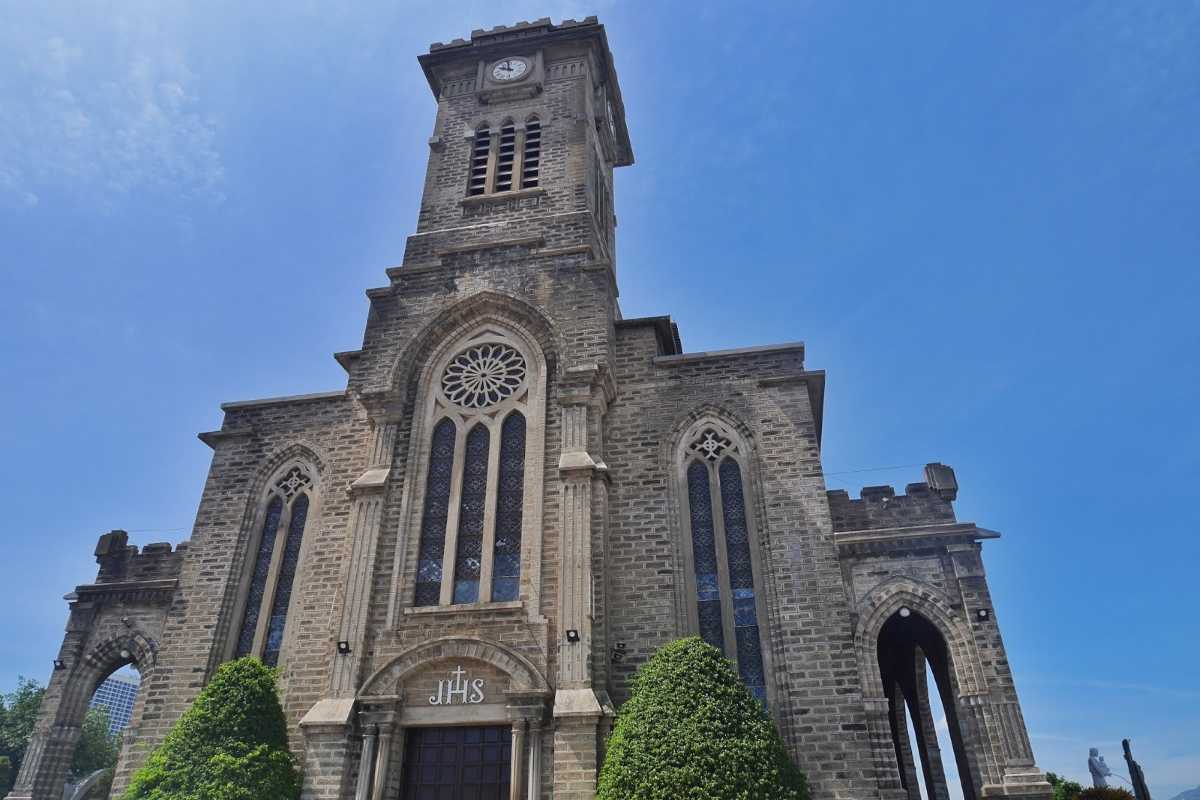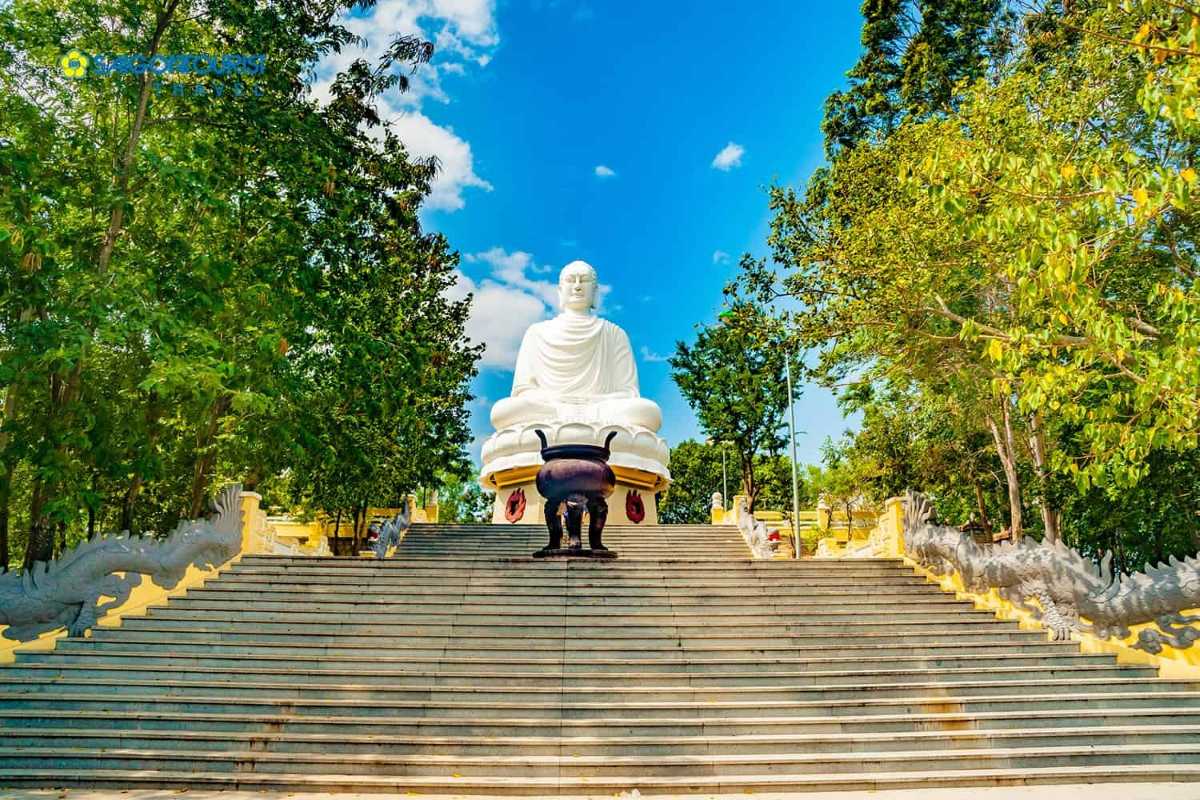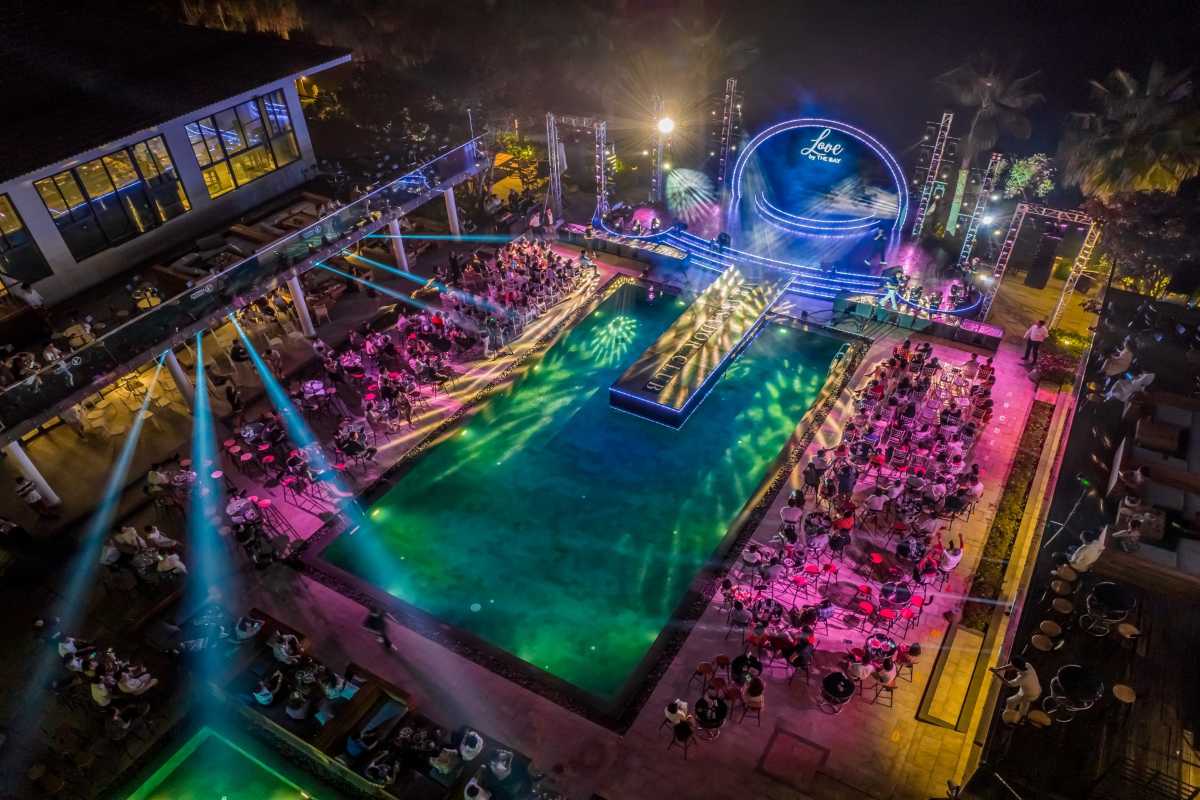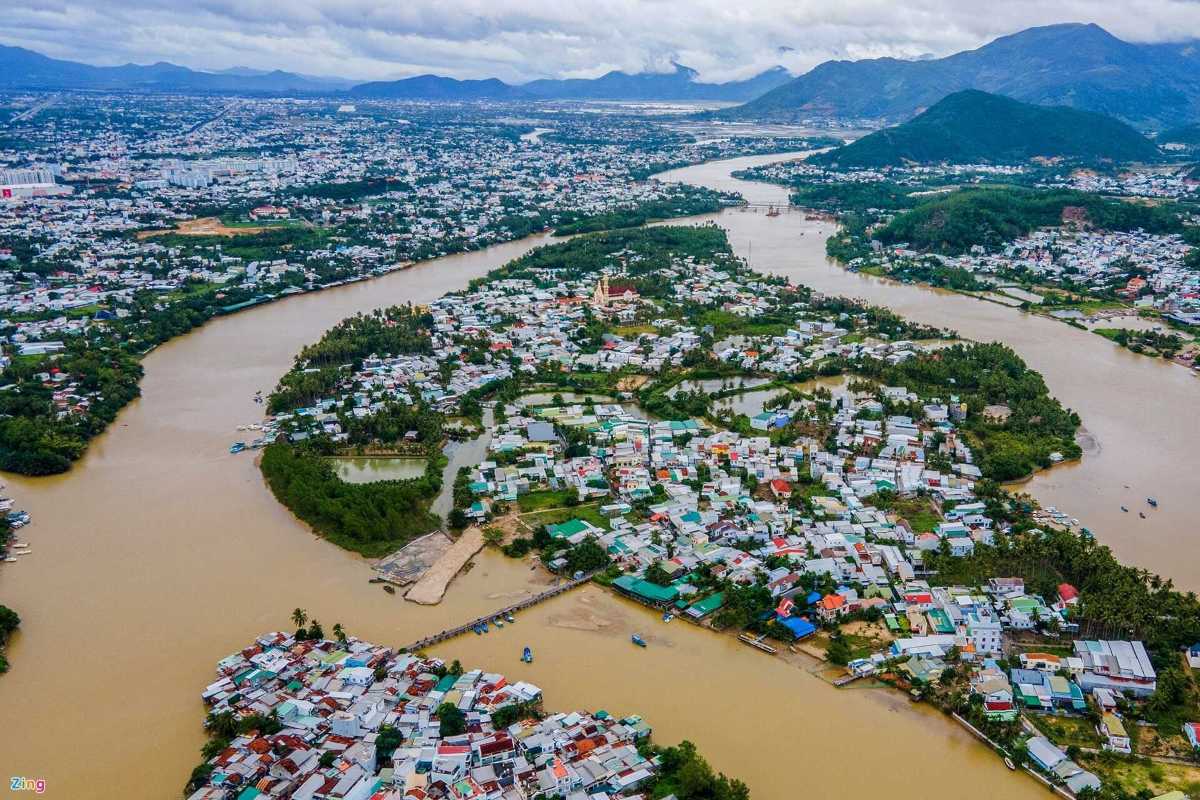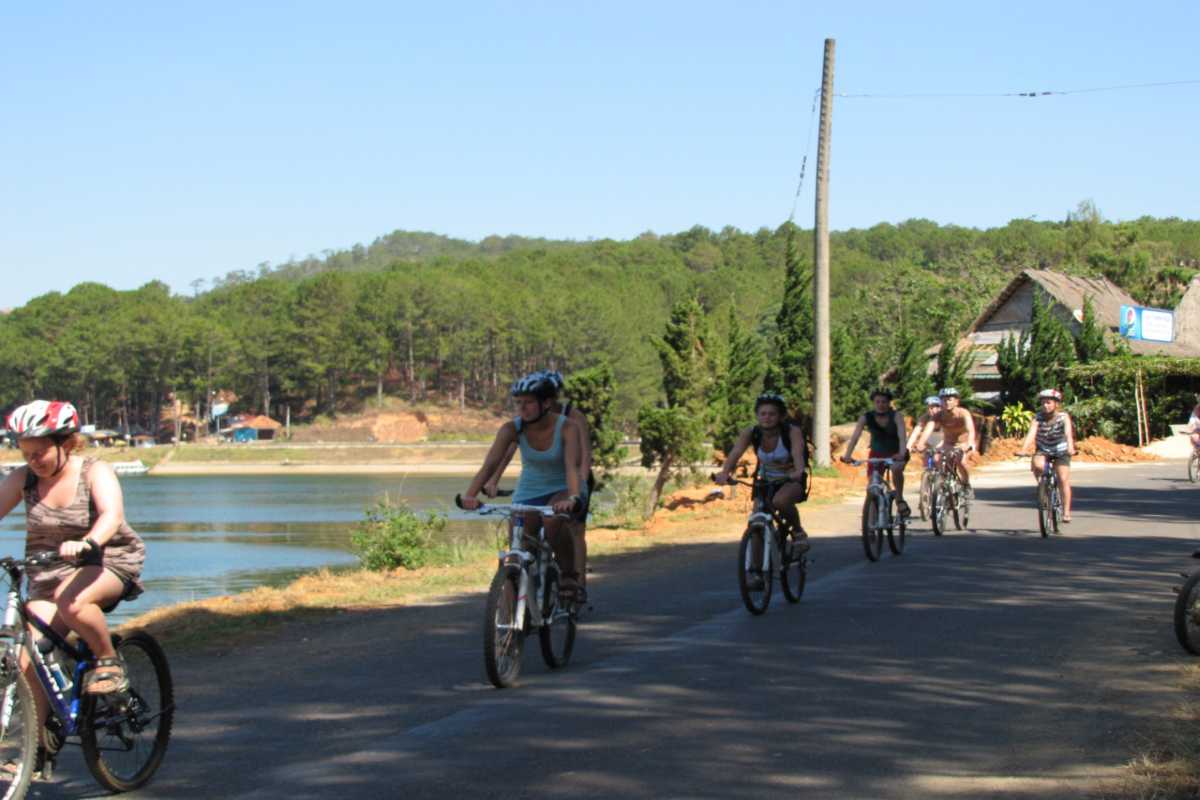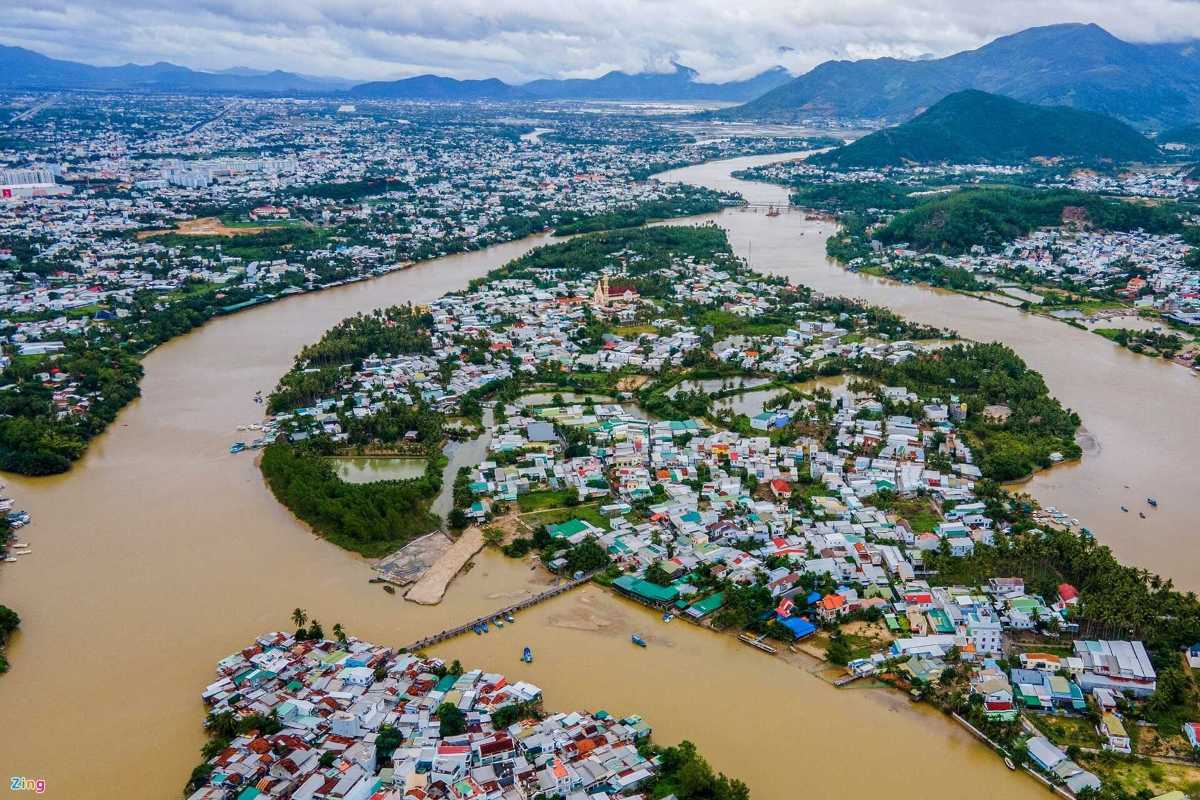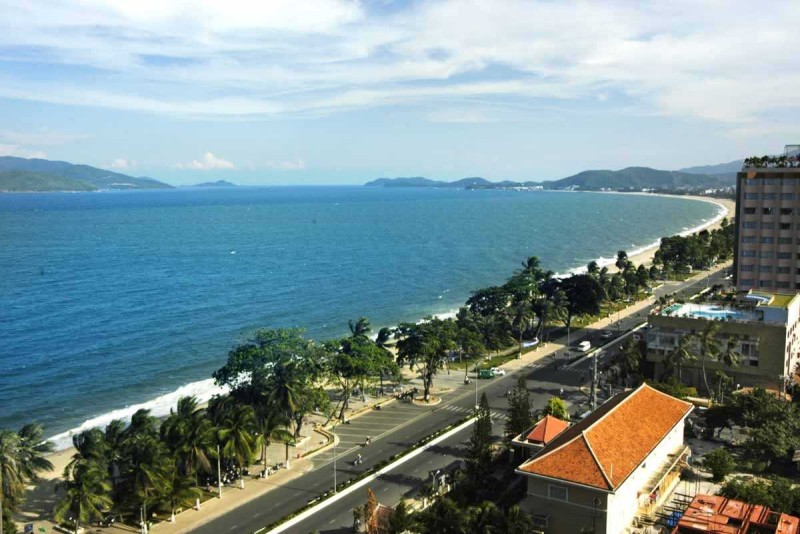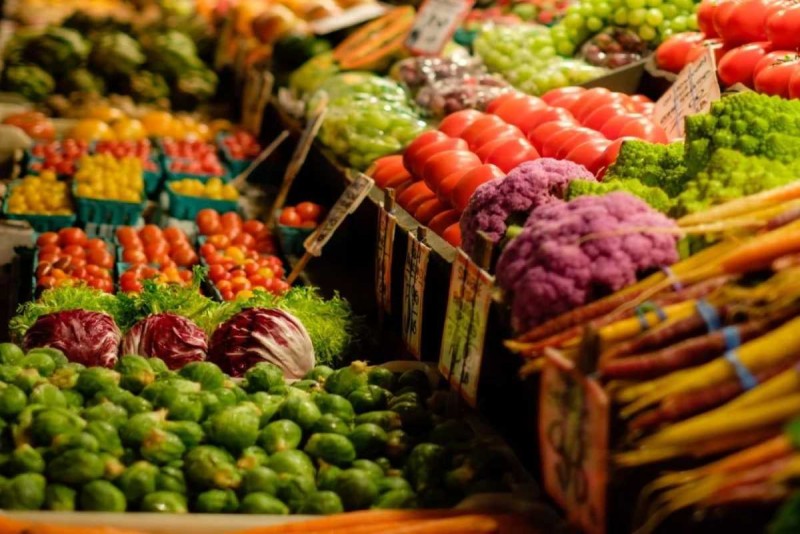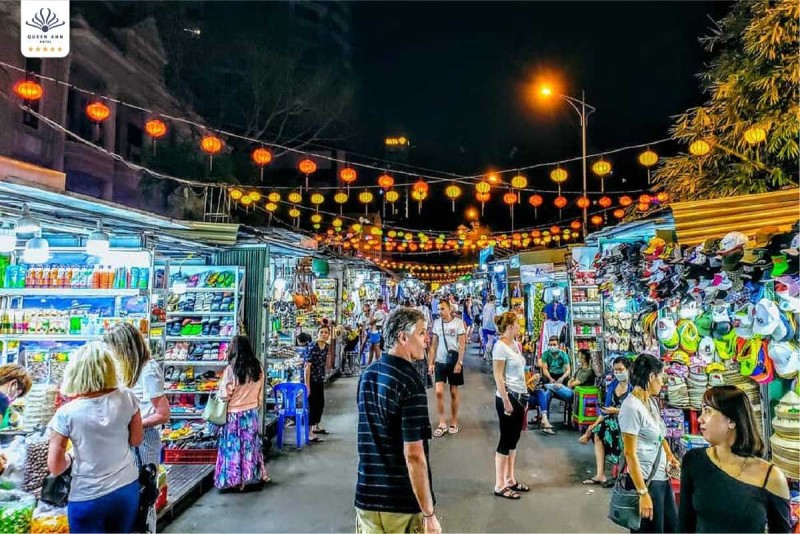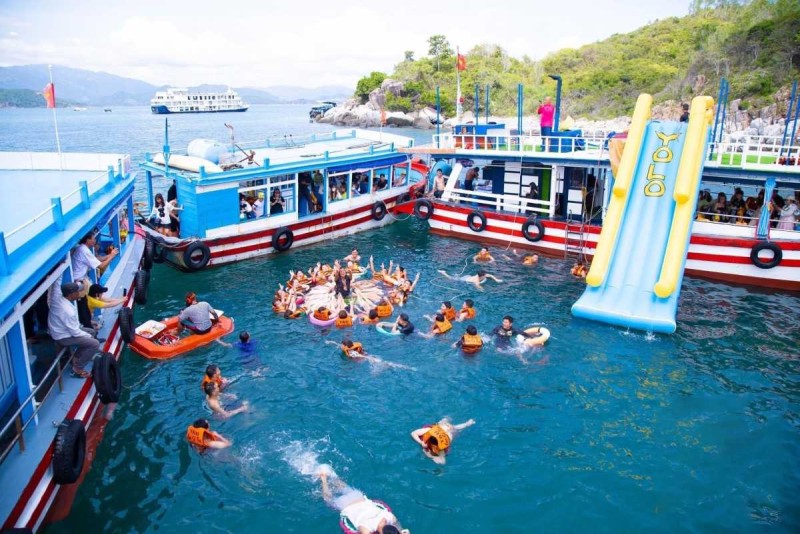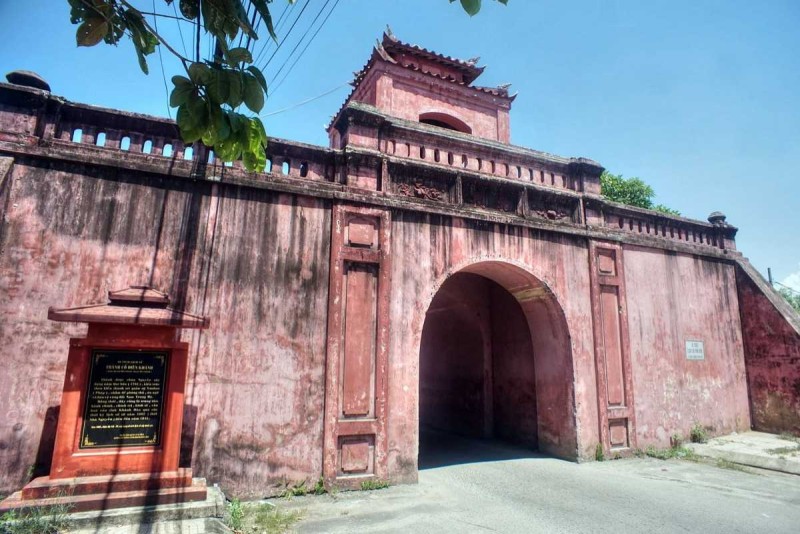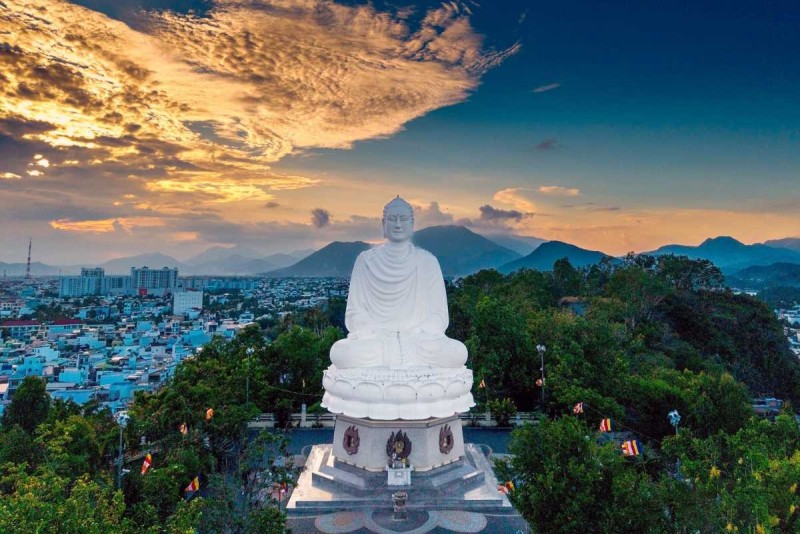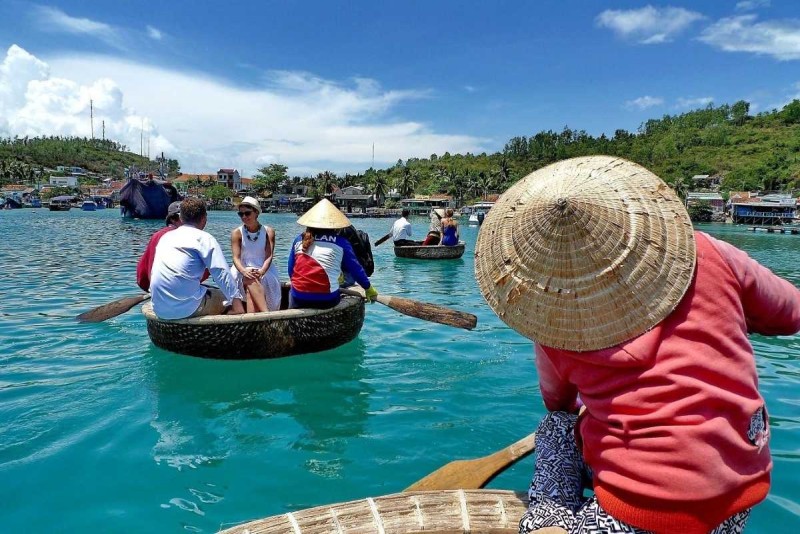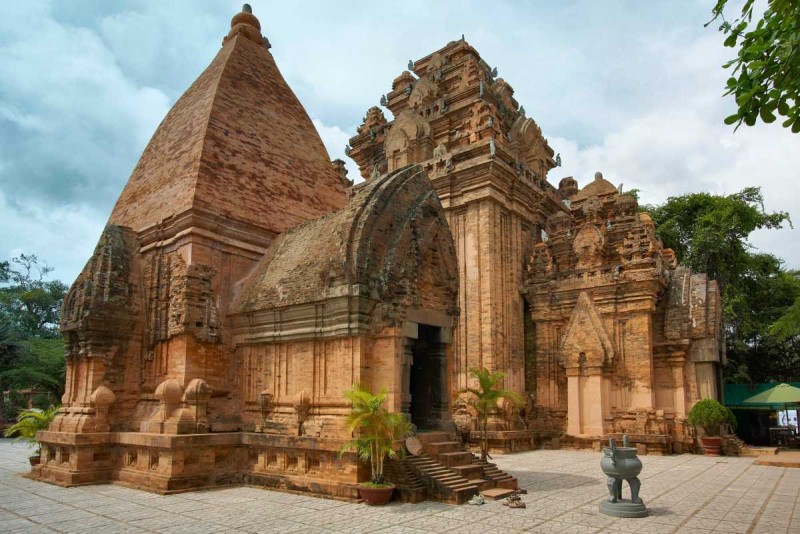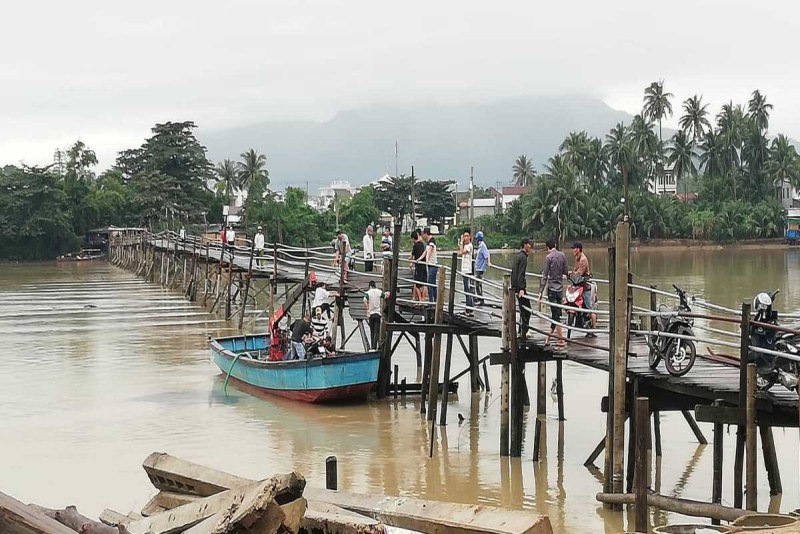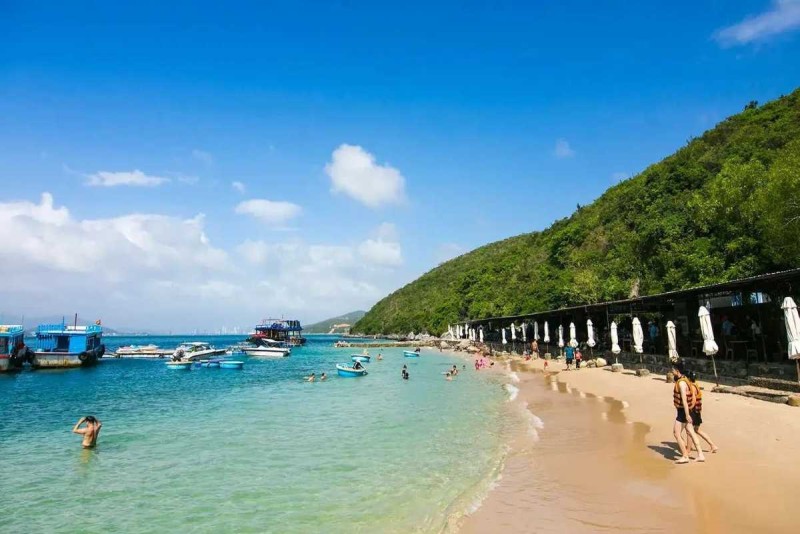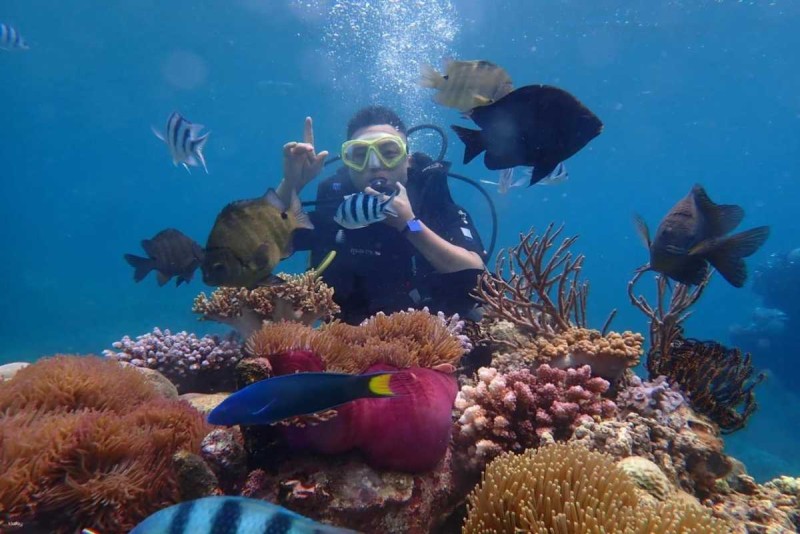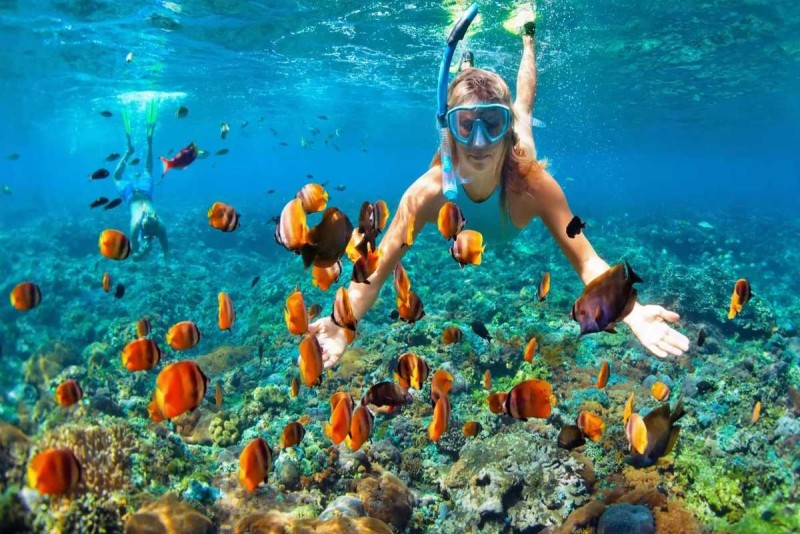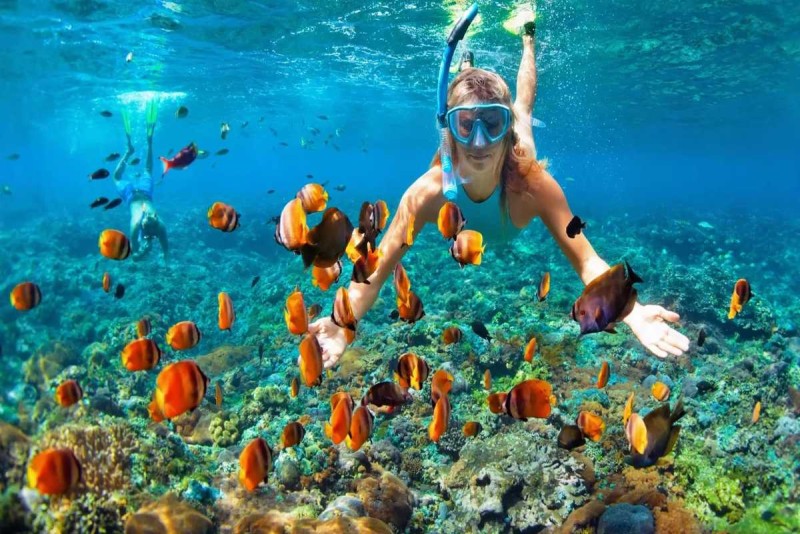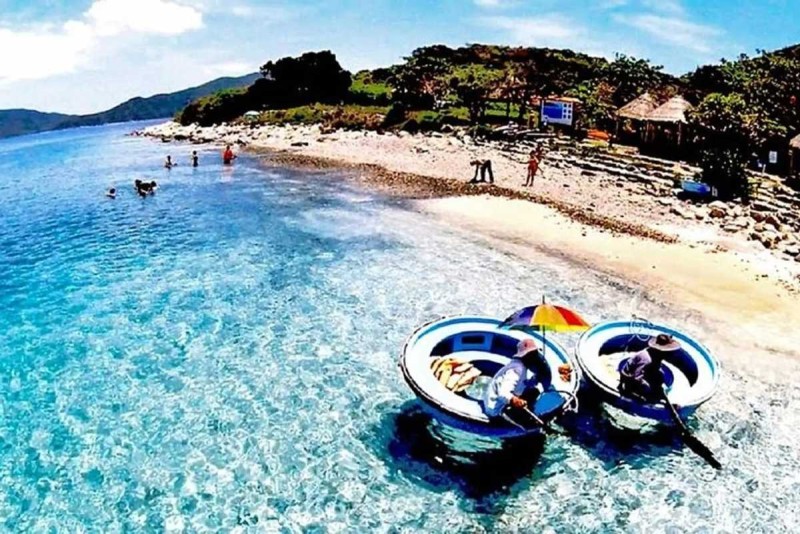Photography Guide: Stunning Salt Mountains & Salt Workers at Hon Khoi Fields
Hon Khoi Salt Fields offer stunning views of vast white salt mountains and showcase traditional salt workers harvesting salt near Nha Trang. This unique destination provides authentic cultural experiences and excellent opportunities for landscape and documentary photography in a vibrant coastal setting.
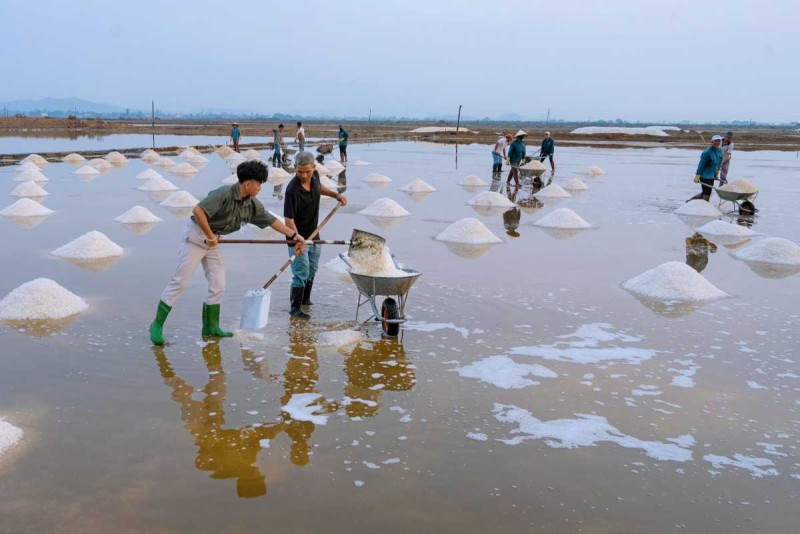
Introduction to Hon Khoi Salt Fields
The Hon Khoi Salt Fields offer a fascinating glimpse into Vietnam’s coastal salt farming heritage. These vast salt mountains, formed through traditional harvesting methods, create stunning landscapes perfect for photographers and cultural explorers alike. Situated near Nha Trang in Hon Khoi Commune, this unique site combines natural beauty with rich cultural significance. Whether you are drawn by the striking white salt piles or the daily rhythms of salt workers, the fields provide endless inspiration. Plan your photography journey to the Hon Khoi Salt Fields and capture authentic moments of this enduring craft.
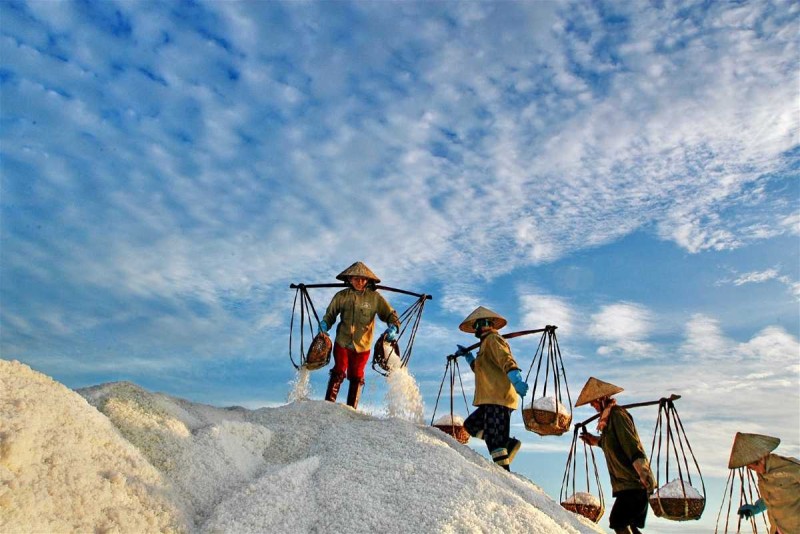
Overview of Hon Khoi Salt Fields
The Hon Khoi Salt Fields span a large coastal area in Khanh Hoa Province, showcasing centuries-old salt production techniques. These fields, dotted with towering salt mountains, are a vital part of the local economy and cultural fabric. Salt is harvested seasonally, resulting in picturesque white piles that shimmer under the sun, creating perfect subjects for landscape and documentary photography. The fields remain largely traditional, offering a rare chance to witness and photograph sustainable salt farming practices. Understanding the scale and history of the Hon Khoi Salt Fields enriches your visit and photography experience. Capture the essence of rural Vietnamese culture through these impressive salt farms. Plan your visit to the Hon Khoi Salt Fields today to explore this remarkable location.
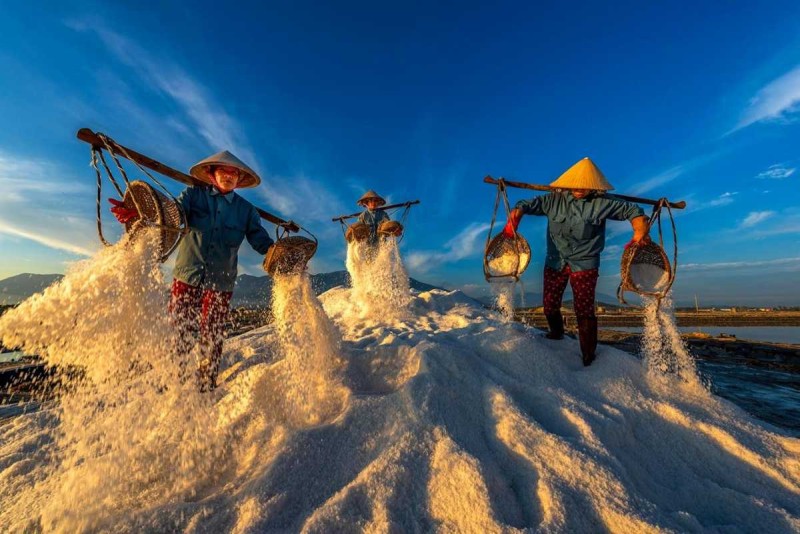
Importance of Salt Mountains and Traditional Salt Farming
The salt mountains at Hon Khoi Salt Fields are not just natural formations but symbols of cultural heritage and economic resilience. Traditional salt farming, practiced for generations, relies on manual methods and natural evaporation cycles. This practice sustains local livelihoods while preserving environmentally friendly techniques. Recognizing the importance of this heritage deepens your appreciation of the scenes you photograph. These salt mountains tell stories of community, sustainability, and the delicate balance between human activity and nature. Embrace the rich cultural heritage salt farming brings to the region by capturing authentic images at the Hon Khoi Salt Fields.

Why Hon Khoi is a Unique Photography Destination
What sets Hon Khoi Salt Fields apart is the combination of dramatic white salt mountains, vibrant human activity, and coastal scenery near Nha Trang. This location offers photographers diverse subjects—from textured salt piles and radiant landscapes to candid portraits of hardworking salt workers. The interplay of light, shadow, and natural patterns creates opportunities for creative and evocative photography. Its authenticity and accessibility make it a preferred spot for photographers seeking to document Vietnam’s rural life. Discover why the Hon Khoi Salt Fields remain one of the best photography spots near Nha Trang and plan your visit to capture these unique moments.

Planning Your Photography Visit
Planning your visit to the Hon Khoi Salt Fields ensures you capture the best photographs and experience this unique cultural landscape fully. Understanding when to visit, how to get there, and what gear to bring will prepare you for a rewarding photography adventure. Let’s explore the essential details to help you plan your trip successfully to the Hon Khoi Salt Fields.

Best Time and Season for Photography
The best time to photograph the Hon Khoi Salt Fields is during the peak salt harvesting months when the iconic white salt mountains are at their most impressive. This period usually falls between November and March, coinciding with Vietnam's dry season, providing ideal weather and lighting conditions. Visiting during these months increases your chances of capturing vibrant landscapes bathed in natural light.
Peak Salt Harvesting Months
This section details the months when salt harvesting reaches its height, creating the vast salt piles that define the landscape.
- Peak Season: November to March – The dry season allows for efficient salt evaporation and harvesting.
- Salt Mountain Formation: Salt piles grow significantly during these months, offering dramatic photographic subjects.
- Weather Stability: Clear skies and less rain improve shooting conditions.
- Photographic Advantage: The crisp sunlight during this period enhances texture and contrast in your photos.
• Visitor Volume: Expect more tourists during peak season, so plan accordingly.
Capturing your visit during these months will maximize the visual impact of the salt fields and enhance your photography experience.
Ideal Weather and Lighting Conditions
Understanding weather and natural light helps you make the most of your photographic opportunities.
- Golden Hour: Early morning and late afternoon provide warm, soft light perfect for dramatic shots.
- Dry Season: Offers clear skies and minimal humidity, reducing haze.
- Cloud Cover: Partial clouds can add mood and diffuse harsh sunlight.
- Wind Conditions: Calm days minimize salt dust, protecting your equipment.
- Temperature: Moderate temperatures allow comfortable shooting sessions.
Timing your visit around these conditions will help you create compelling and vibrant images of the Hon Khoi Salt Fields.
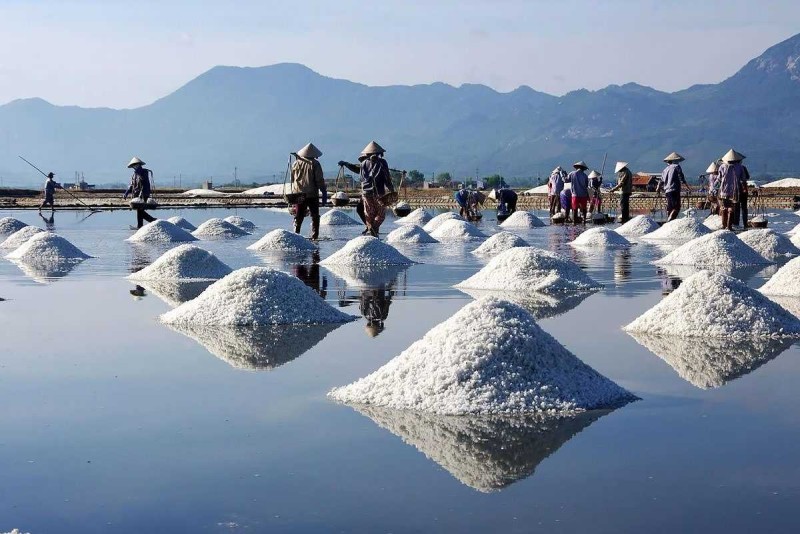
How to Get to Hon Khoi Salt Fields
Reaching the Hon Khoi Salt Fields from Nha Trang is straightforward with several transportation options. Knowing your choices helps you select the best route and mode for convenience and budget.
Transportation Options from Nha Trang
Consider the following methods to travel from Nha Trang to the salt fields:
- Taxi Services: Convenient and direct, taxis offer door-to-door service but can be more expensive.
- Motorbike Rentals: Ideal for independent travelers seeking flexibility and adventure.
- Local Buses: Budget-friendly, with regular routes towards Cam Lam District.
- Private Car Hire: Comfortable and customizable for groups or photographers with equipment.
- Bicycle Tours: For the adventurous, cycling offers immersive scenic views but requires fitness.
Choose transportation that suits your travel style and photography schedule.
Accessibility and On-Site Navigation
Once at the Hon Khoi Salt Fields, navigating the terrain safely and respectfully is essential.
- Walking Paths: Clearly marked trails guide visitors around the salt pans.
- Terrain Awareness: Salt fields can be slippery; wear appropriate footwear.
- Respect Boundaries: Avoid stepping on active salt pans to preserve farming activities.
- Local Guidance: Engage with salt workers or guides for insider access.
- Equipment Safety: Protect your gear from salt and moisture by using covers.
Following these tips ensures a safe and considerate visit to the Hon Khoi Salt Fields.
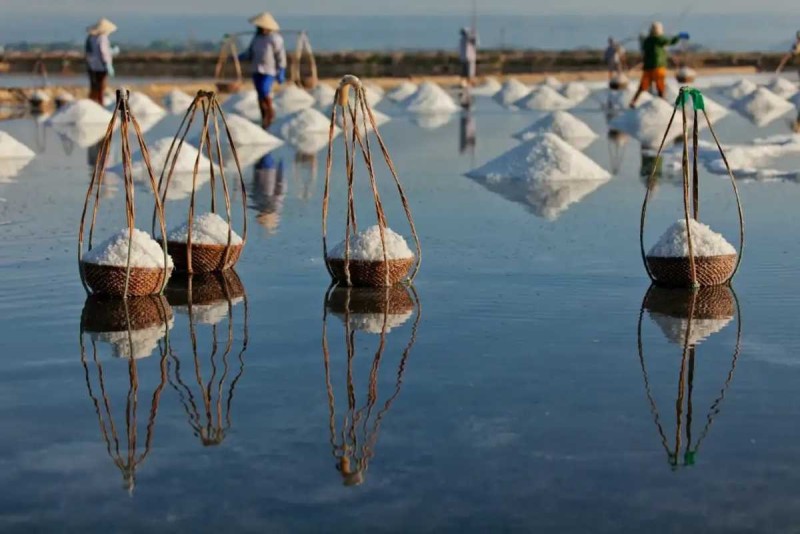
Essential Gear and Equipment for Salt Field Photography
Bringing the right gear helps you capture the stunning salt mountains and salt workers effectively while protecting your equipment.
Camera Types and Recommended Lenses
Selecting suitable cameras and lenses enhances your photographic range.
- DSLR/Mirrorless Cameras: Offer versatility and high image quality.
- Wide-Angle Lenses: Capture expansive salt landscapes and dramatic skies.
- Telephoto Lenses: Perfect for candid shots of salt workers from a distance.
- Macro Lenses: Ideal for detailed textures of salt crystals.
- Fast Lenses: Useful for low-light conditions during golden hours.
Choosing the right gear tailors your photography to diverse subjects at the salt fields.
Protective Gear for Equipment (salt, sun, dust)
Salt, sun, and dust pose risks to photography gear. Protect your equipment with:
- Waterproof Covers: Shield cameras and lenses from salt spray.
- Lens Hoods: Reduce flare and protect the front element.
- UV Filters: Guard against scratches and sun damage.
- Cleaning Kits: Essential for maintaining lens clarity.
- Protective Bags: Keep gear safe during transport and off-path walks.
These precautions ensure your equipment stays in optimal condition throughout your visit.
Additional Accessories (tripod, filters)
Enhance your photos and shooting experience with these accessories:
- Tripods: Provide stability for long exposures and time-lapse shots.
- Polarizing Filters: Reduce reflections and enhance color saturation.
- Neutral Density Filters: Allow creative exposure control in bright light.
- Remote Shutter Releases: Minimize camera shake during shooting.
- Extra Batteries and Memory Cards: Ensure uninterrupted shooting sessions.
Equipping yourself thoughtfully will expand your creative possibilities at the Hon Khoi Salt Fields.
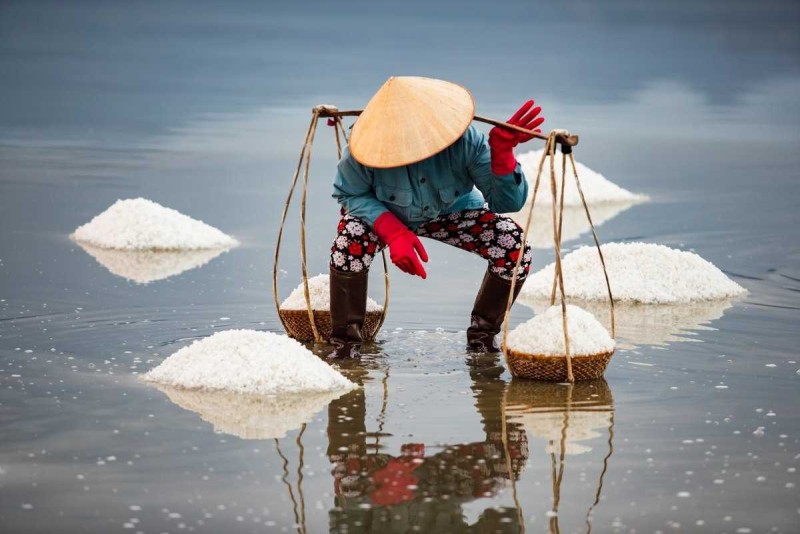
Photography Techniques and Tips at Hon Khoi Salt Fields
Mastering photography at the Hon Khoi Salt Fields requires more than just a camera; it calls for understanding how to capture the unique salt mountains, the human element, and the environment. This section provides you with practical techniques and expert tips to help you produce striking images that tell the story of this vibrant coastal landscape. Whether you focus on landscapes or portraits, applying these methods will improve your photography and deepen your connection to the place. Use these insights to make your visit to the Hon Khoi Salt Fields truly memorable.
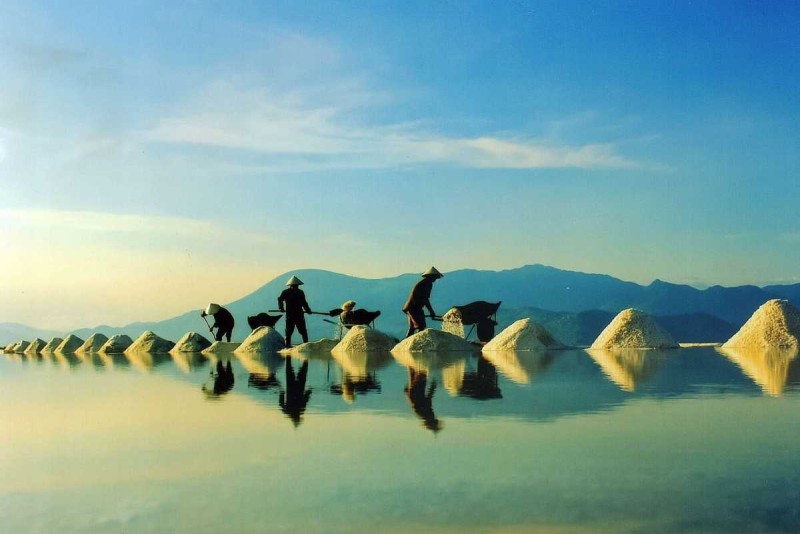
Capturing the Salt Mountains
The salt mountains at Hon Khoi present a remarkable subject with their vast white textures and striking shapes. Composing and lighting these natural sculptures skillfully enhances their visual impact and tells the story of traditional salt farming.
Composing the White Salt Piles with Natural Landscape
Framing the salt piles in harmony with the surrounding environment elevates your photos.
- Leading Lines: Use paths or water channels to guide viewers’ eyes toward the salt piles.
- Rule of Thirds: Place salt mountains off-center for balanced and dynamic images.
- Texture Contrast: Capture the rough surfaces of salt against smooth skies or water.
- Foreground Interest: Include nearby boats or plants to add depth.
- Natural Framing: Use trees or structures to frame the salt piles naturally.
Applying these composition tips will create compelling and well-balanced images of the salt mountains.
Using Light and Shadows for Dramatic Effects
Light shapes mood and depth in your photos of the salt fields.
- Golden Hour: Shoot during sunrise or sunset for warm, directional light.
- Shadows: Use the shadows cast by salt piles to add texture and dimension.
- Backlighting: Capture the glowing edges of salt crystals with low sun angles.
- Diffused Light: Overcast days soften shadows for even exposure.
- Reflective Surfaces: Utilize wet salt pans for reflective compositions.
Mastering light and shadow brings drama and life to your salt field photography.
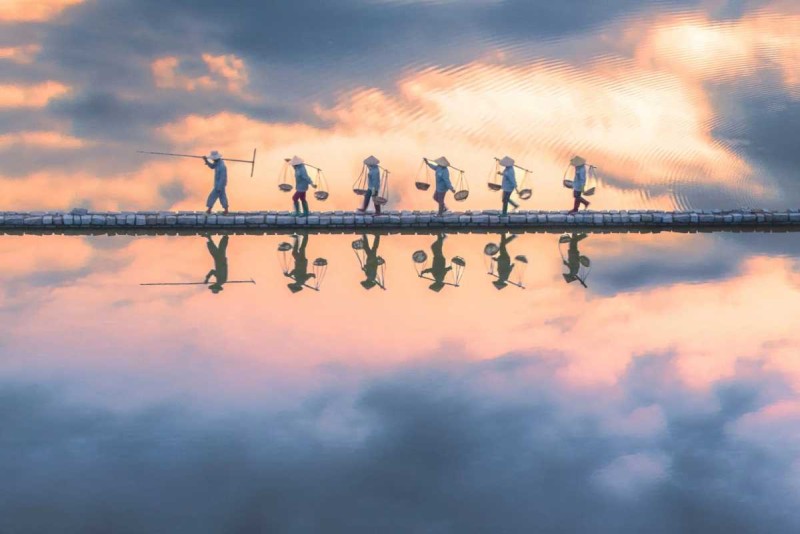
Photographing Salt Workers
Photographing the salt workers introduces a vital human dimension to your portfolio, but requires respect and sensitivity to local culture and privacy.
Ethical Considerations and Seeking Permission
Respectful photography builds trust and enriches your storytelling.
- Ask Consent: Always seek permission before taking portraits or close-ups.
- Explain Intent: Communicate your purpose clearly and politely.
- Avoid Intrusion: Be mindful of private moments and work activities.
- Cultural Awareness: Respect local customs and dress codes.
- Build Rapport: Spend time engaging with workers to capture genuine expressions.
Following these practices ensures your images honor the dignity of the salt workers.
Capturing Action Shots of Harvesting Activities
Dynamic images show the hard work behind salt production.
- Use Fast Shutter Speeds: Freeze motion during harvesting.
- Anticipate Movements: Watch routines to capture peak moments.
- Vary Angles: Shoot from low or high perspectives for interest.
- Include Tools: Show traditional implements in action.
- Focus on Expressions: Capture concentration and effort.
These tips help convey the authenticity and energy of salt farming.
Candid vs. Portrait Photography Approaches
Choosing your style influences the mood of your photos.
- Candid Shots: Capture natural, unposed moments for authenticity.
- Environmental Portraits: Show subjects within their working environment.
- Posed Portraits: Respectfully direct subjects for detailed character studies.
- Mixed Approaches: Blend candid and posed shots for storytelling depth.
- Use Natural Light: Avoid flash to maintain atmosphere.
Select the style that best fits your narrative and rapport with subjects.
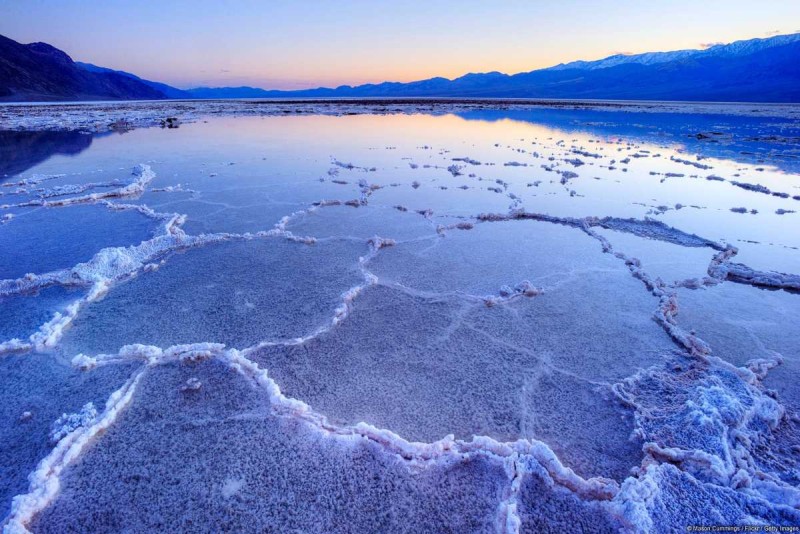
Landscape and Environmental Shots
Capturing the broader setting contextualizes your salt field photos and adds storytelling layers.
Incorporating Coastal and Sky Elements
Including surroundings enriches your compositions.
- Wide Horizons: Frame expansive skies and ocean views.
- Weather Drama: Use cloud formations to add mood.
- Reflections: Capture wet pans reflecting skies.
- Layering: Combine salt piles with distant landscapes.
- Color Contrast: Highlight blue skies against white salt.
These elements bring depth and atmosphere to your images.
Using Wide-Angle and Telephoto Perspectives
Lens choices offer creative control.
- Wide-Angle: Emphasize scale and environment.
- Telephoto: Isolate details and distant subjects.
- Perspective Play: Change viewpoints to create interest.
- Zoom Flexibility: Switch lenses for varied shots.
- Tripod Use: Stabilize for sharp images.
Using lenses thoughtfully broadens your visual storytelling at the salt fields.
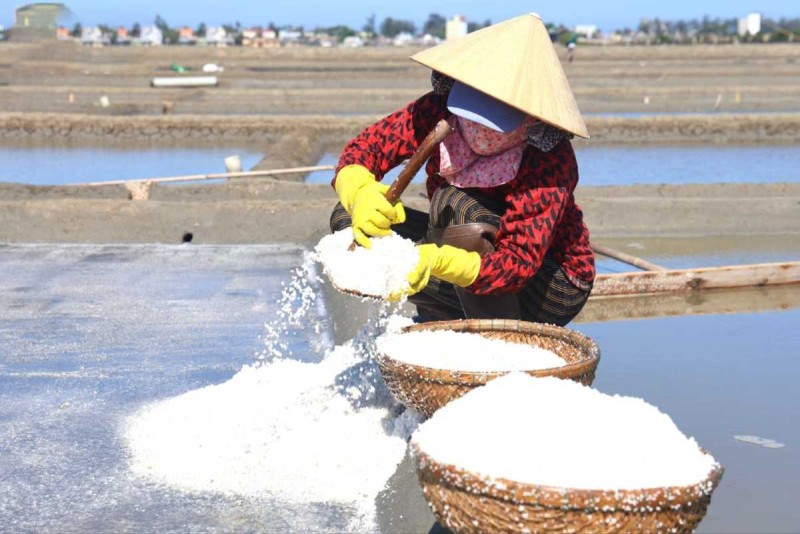
Creative Photography Ideas
Pushing creative boundaries helps your work stand out.
Experiment with abstract patterns, time-lapses, and unique light conditions to create fresh perspectives of the Hon Khoi Salt Fields. These approaches add artistic flair and deepen your connection with the landscape.
Abstract Patterns and Textures of Salt Crystals
Focus on details for artistic shots.
- Macro Photography: Capture intricate salt crystal structures.
- Repetition: Emphasize geometric patterns of salt piles.
- Contrast: Use light to highlight texture.
- Minimalist Compositions: Isolate simple forms.
- Color Nuances: Explore subtle hues in salt.
Abstract shots reveal hidden beauty within the salt fields.
Time-lapse and Golden Hour Opportunities
Capture dynamic and warm lighting effects.
- Time-lapse: Show progression of salt harvesting or changing light.
- Golden Hour: Shoot during dawn or dusk for soft, warm tones.
- Shadows and Highlights: Use to emphasize shapes.
- Weather Changes: Document shifting conditions.
- Patience: Plan shoots to capture natural rhythms.
These techniques add movement and mood to your portfolio.
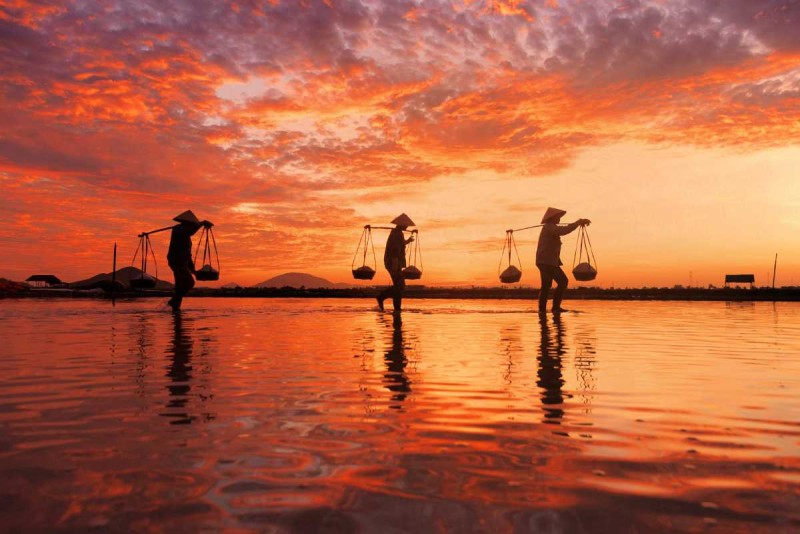
Cultural Insights and Storytelling Through Photography
The Hon Khoi Salt Fields hold a deep cultural significance that extends beyond their striking visuals. Understanding the salt farming traditions and the lives of salt workers enriches your photography, allowing you to tell authentic stories that honor this unique heritage. Through your lens, you can capture not only the landscapes but also the human experiences embedded in the salt farming culture of Hon Khoi. Embrace these cultural insights to create meaningful and respectful photographic narratives during your visit to the Hon Khoi Salt Fields.
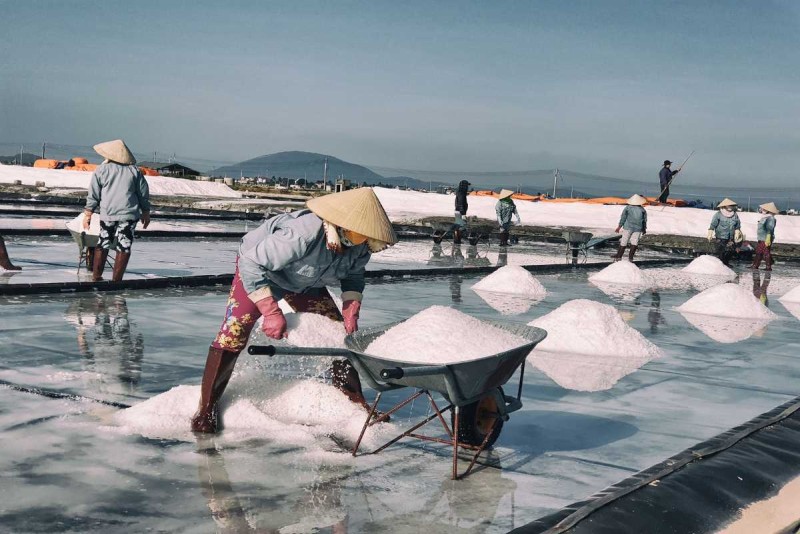
Understanding the Salt Farming Process
The traditional salt farming process at Hon Khoi Salt Fields is a careful balance of nature and human effort. Salt is produced through a series of steps involving seawater evaporation, manual harvesting, and piling, reflecting centuries-old techniques preserved by local communities. Knowing these steps helps you appreciate the rhythm and labor behind your photographic subjects. From filling evaporation ponds to the final stacking of salt mountains, each phase offers unique photo opportunities that showcase the cultural and environmental story of salt farming in Vietnam.
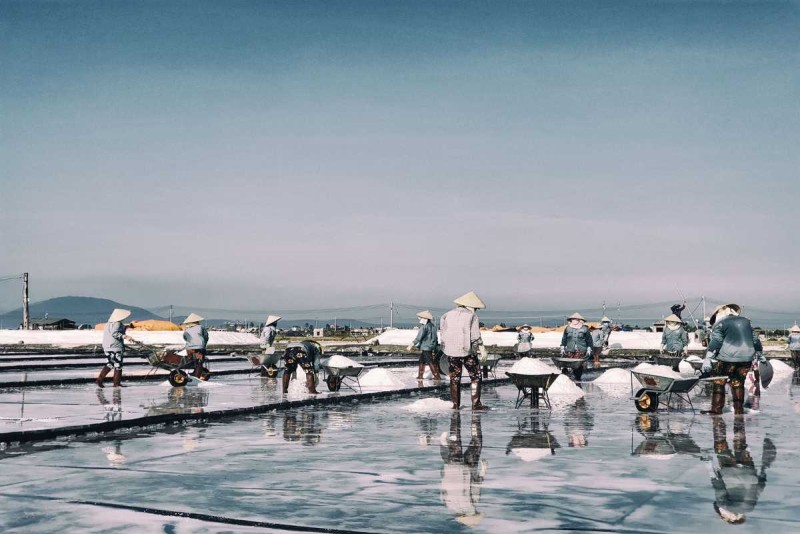
Highlighting the Daily Life of Salt Workers
The daily routines of salt workers at Hon Khoi are filled with hard work, skill, and tradition. By observing their movements—from tending the salt ponds to harvesting and transporting salt—you gain insight into their enduring way of life. These moments provide rich material for storytelling photography that captures the human spirit and cultural fabric of coastal Vietnam. Documenting their daily experiences with empathy and respect helps bring their stories to a wider audience and deepens your connection with the region.
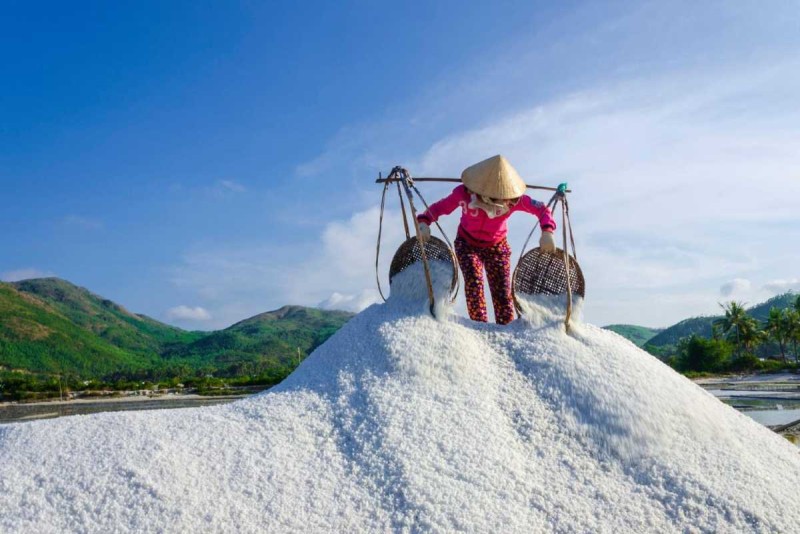
Conveying the Heritage and Tradition in Images
Photographers have a unique role in preserving the heritage of salt farming through visual storytelling. Capturing the traditional attire, tools, and communal activities of the salt workers can convey the pride and history of this ancient practice. Using ethnographic and cultural photography techniques, you can express the enduring legacy of salt farming in Vietnam. By focusing on heritage and tradition, your images will resonate emotionally and contribute to cultural preservation efforts. Approach your work with sensitivity and intention to honor the people and their customs authentically.
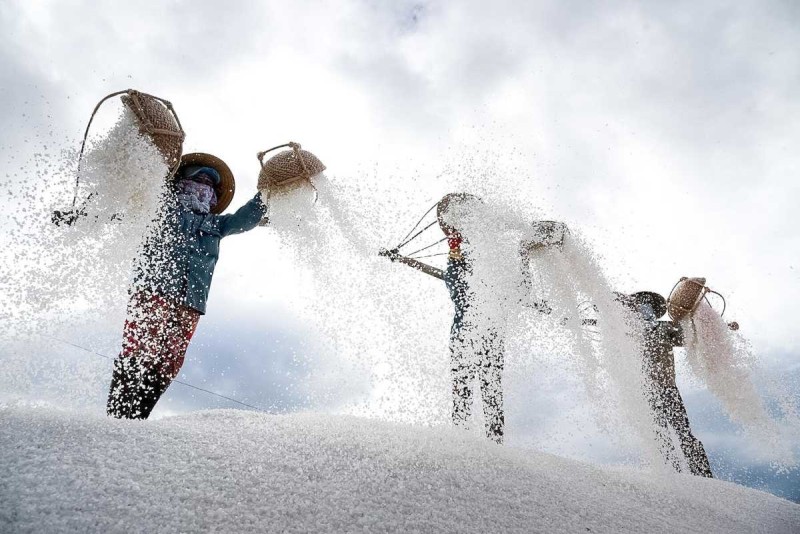
Practical Tips for Visitors
Visiting the Hon Khoi Salt Fields is a rewarding experience that blends natural beauty and cultural richness. To ensure your trip is respectful, safe, and enjoyable, it’s important to prepare thoughtfully. This section offers essential advice on how to interact with locals, stay safe in the environment, practice environmental responsibility, and navigate nearby amenities. With these practical tips, you can make the most of your time at the Hon Khoi Salt Fields while honoring the community and preserving the landscape.

Respectful Interaction with Locals
Engaging with the salt workers and local community at Hon Khoi respectfully enhances your visit and photography experience. Understanding cultural norms helps build trust and fosters positive connections.
When interacting with locals, remember to approach with kindness and humility. Observe their customs and personal space, especially when photographing. Asking permission before taking close-up photos is essential to respect privacy and build rapport. Showing genuine interest in their work and culture can lead to more meaningful exchanges and authentic photographic moments.
By practicing respectful interaction with locals at Hon Khoi Salt Fields, you contribute to preserving the community’s dignity and heritage while enriching your travel memories.

Safety and Health Precautions at the Salt Fields
The environment at the Hon Khoi Salt Fields presents certain challenges that visitors should prepare for. Awareness and precaution are key to enjoying a safe and healthy visit.
Be mindful of the hot sun and strong reflection from white salt surfaces; apply sunscreen and wear protective clothing. Stay hydrated, especially during peak sunlight hours. The terrain can be uneven and slippery, so wear sturdy footwear and move carefully. Be cautious around active salt pans to avoid accidents and respect working areas.
Taking these safety precautions will help you focus on capturing great photos while protecting your well-being at the Hon Khoi Salt Fields.

Environmental Responsibility and Conservation Awareness
Protecting the fragile ecosystem and cultural landscape of the Hon Khoi Salt Fields is vital for sustainable tourism. Visitors play a crucial role in minimizing their impact.
Avoid littering and dispose of waste properly. Stick to designated paths to prevent damage to salt pans and surrounding habitats. Respect local farming practices and refrain from disturbing salt workers during their tasks. Support community-led conservation efforts by promoting awareness and ethical travel behaviors.
By practicing environmental responsibility at Hon Khoi Salt Fields, you help preserve this unique site for future generations to experience and photograph.

Nearby Amenities and Facilities
While the Hon Khoi Salt Fields offer a rustic and authentic experience, knowing about nearby facilities can make your visit more comfortable.
The Hon Khoi Commune provides basic amenities including local eateries serving fresh seafood, small shops for essentials, and public restrooms near the main access points. Transport services such as taxis and motorbike rentals are readily available in nearby Nha Trang and Cam Lam District for convenient arrival and departure. Planning your meals and breaks around these facilities ensures a smooth visit.
Familiarizing yourself with amenities near the Hon Khoi Salt Fields will enhance your overall travel experience and allow you to focus on your photography adventure.

Additional Activities and Nearby Attractions
Expanding your visit beyond the Hon Khoi Salt Fields opens opportunities to explore vibrant cultural scenes and diverse photographic subjects nearby. This section guides you through nearby fishing villages, complementary photography spots, and immersive local cultural experiences that enrich your journey. Discover how to blend natural beauty with authentic cultural encounters for a fuller, memorable visit to the Hon Khoi Salt Fields and its surroundings.

Exploring Surrounding Fishing Villages
The fishing villages around Hon Khoi offer a glimpse into traditional coastal life, with bustling markets, colorful boats, and tight-knit communities. Visiting these villages allows you to witness local customs, taste fresh seafood, and photograph daily routines shaped by centuries of fishing heritage. These villages provide rich visual stories contrasting with the salt fields and are ideal for capturing candid moments of rural Vietnamese life.

Complementary Photography Spots Near Hon Khoi
To diversify your photographic portfolio, several nearby spots offer scenic beauty and cultural depth. Consider exploring coastal shores with pristine beaches, rural countryside paths, and local temples or markets around Nha Trang and Cam Lam District. These locations provide varied landscapes, vibrant colors, and unique human-interest subjects, perfect for photographers seeking a broad range of visuals within a compact area.

Combining Salt Field Visits with Local Cultural Experiences
Enhance your visit by integrating cultural activities such as attending local festivals, visiting handicraft villages, or joining ethnic cultural tours near Hon Khoi. These experiences deepen your understanding of the region’s heritage and add layers of meaning to your photographic work. By blending nature and culture, you create a holistic travel experience that celebrates both the environment and its people.

Post-Photography Considerations
After capturing stunning images at the Hon Khoi Salt Fields, it’s essential to refine your work and engage thoughtfully with the community and your audience. This section guides you through best practices for editing and enhancing your photos, sharing them responsibly, and building meaningful connections with local photographers and communities. Following these steps will ensure your photography honors the cultural heritage of Hon Khoi and enriches your creative journey.

Editing and Enhancing Salt Field Photos
Improving your photos through careful editing can highlight the textures, colors, and atmosphere of the salt mountains and workers. Use tools like Lightroom or Photoshop to adjust lighting, contrast, and color balance. Focus on enhancing natural light effects and maintaining authenticity without over-processing. Techniques such as sharpening details and correcting exposure help your images stand out while preserving the scene’s original mood.
Experiment with subtle adjustments that emphasize the salt crystals’ unique textures and the dynamic interplay of light and shadow. These editing choices elevate your photography and bring your vision of Hon Khoi Salt Fields to life.

Sharing and Publishing Your Work Responsibly
When sharing your photographs of the Hon Khoi Salt Fields and its people, ethical considerations are paramount. Always respect the privacy and dignity of salt workers by obtaining consent for identifiable images. Use model releases where appropriate and credit local communities when sharing cultural stories.
Avoid cultural appropriation and stereotypes by portraying subjects with honesty and respect. Sharing your work responsibly not only honors the people you photograph but also builds trust and supports cultural preservation efforts. Consider using captions that educate viewers about the salt farming heritage and local traditions.

Connecting with Local Communities and Photographers
Building relationships with local photographers and communities around Hon Khoi opens doors to deeper cultural understanding and creative collaboration. Participating in workshops, photo walks, or community events can enhance your skills and broaden your perspective.
Engage respectfully by showing interest in local stories and customs, and share your experiences openly. These connections foster mutual learning and enrich your photography practice while supporting community-based tourism. Networking with fellow photographers creates lasting opportunities for cultural exchange and joint projects centered on the unique life at the Hon Khoi Salt Fields.

Conclusion and Final Recommendations
The Hon Khoi Salt Fields offer a captivating blend of natural beauty and cultural heritage that every photographer should experience. This guide has highlighted essential photography techniques, optimal timing, and respectful practices to help you make the most of your visit. Embracing these insights will not only enhance your photos but also support sustainable and culturally sensitive tourism. For further assistance in planning your trip, resources including tours and local expertise are available to ensure a seamless and enriching experience at the Hon Khoi Salt Fields.

Summary of Key Photography Highlights
To capture the essence of the Hon Khoi Salt Fields, focus on composition techniques that emphasize the iconic white salt piles and natural landscapes. Timing your visit during peak salt harvesting months and golden hour lighting will significantly improve your shots. Remember to approach photographing salt workers with respect, seeking permission and using ethical practices. Combining landscape, portrait, and creative photography styles provides a well-rounded visual story.
- Composition and lighting are critical for striking salt mountain photos.
- Respectful interaction with locals enriches cultural storytelling.
- Peak harvest seasons offer dynamic photographic opportunities.
Keep these photography essentials in mind to create compelling images at the Hon Khoi Salt Fields.

Encouragement to Explore and Respect Hon Khoi Salt Fields
Visiting the Hon Khoi Salt Fields invites you to engage deeply with a living cultural landscape. Explore responsibly by honoring local customs and preserving the environment. Your mindful actions help protect this heritage site and support the communities that maintain it. By practicing respectful travel, you contribute to sustainable tourism that benefits both visitors and residents. Let your photography tell stories that celebrate the beauty and tradition of Hon Khoi while fostering lasting respect and understanding.

Resources for Further Information and Tours
Planning your visit to the Hon Khoi Salt Fields is easier with reliable resources and expert guidance. Consider booking photography tours and cultural experiences through trusted local operators who understand the region’s nuances. The team at Asia Travel Links offers itinerary planning support and travel advice to help you navigate Nha Trang and Khanh Hoa Province effectively. For personalized assistance, you can visit their website or email us directly.
- Asia Travel Links website provides detailed tour options and travel information.
- Local operators offer guided photography tours tailored to your interests.
- Contact Asia Travel Links via email or phone for itinerary support.
Utilize these resources to ensure a rewarding and well-organized journey to the Hon Khoi Salt Fields.
Mike Nguyen
Travel Advisor
Mobile: +84917506881 (whatsapp available)
Email: contact@asiatravellinks.com
Faqs
The Hon Khoi Salt Fields offer a unique blend of natural and cultural subjects that make them exceptional for photography. The vast white salt mountains create dramatic landscapes, while the traditional salt workers add a human element that tells a story of heritage and labor.
- Vast white salt piles that create striking contrasts and textures
- Authentic scenes of salt harvesting reflecting rural Vietnamese culture
- Coastal scenery near Nha Trang adding natural beauty and context
- Opportunities for diverse shots: landscapes, portraits, and detailed textures
This combination makes the Hon Khoi Salt Fields a rich destination for photographers seeking both scenic and documentary-style images. Plan your visit to capture these compelling visuals firsthand.
Traveling from Nha Trang city to the Hon Khoi Salt Fields is straightforward and accessible by several modes of transport. The salt fields lie about 15 kilometers southwest, connected primarily by road.
- Taxi services offer direct and convenient transfers from Nha Trang
- Motorbike rentals provide flexibility and adventure for independent travelers
- Local buses run towards Cam Lam District, suitable for budget travelers
- Private car hires are ideal for groups or photographers carrying equipment
Choosing the right transport depends on your schedule, budget, and comfort needs. Having a clear plan ensures a smooth journey to this unique photography spot.
The optimal time to photograph the Hon Khoi Salt Fields is during the peak salt harvesting season, which falls between November and March. This period coincides with Vietnam's dry season, offering ideal weather and lighting.
- Peak salt piles form during November to March, creating iconic landscapes
- Dry season provides clear skies and bright sunlight for vibrant photos
- Early mornings and late afternoons (golden hours) deliver warm, soft light
- Avoid rainy months to reduce risks of poor visibility and equipment damage
Visiting during these months enhances your chances of capturing the fields at their most photogenic and culturally active. Plan your trip accordingly to make the most of this timing.
There are generally no formal entry fees required to access the Hon Khoi Salt Fields. The site is an open rural area primarily used for salt farming, allowing visitors to explore freely while respecting the working environment.
- Access is mostly free, with no official ticket or gate fees
- Visitors should remain respectful of farming operations and private areas
- Local guides or tours may charge fees for specialized access or services
- Always confirm with local operators if planning a guided experience
This open access makes the Hon Khoi Salt Fields an affordable and accessible destination for photographers and travelers alike.


